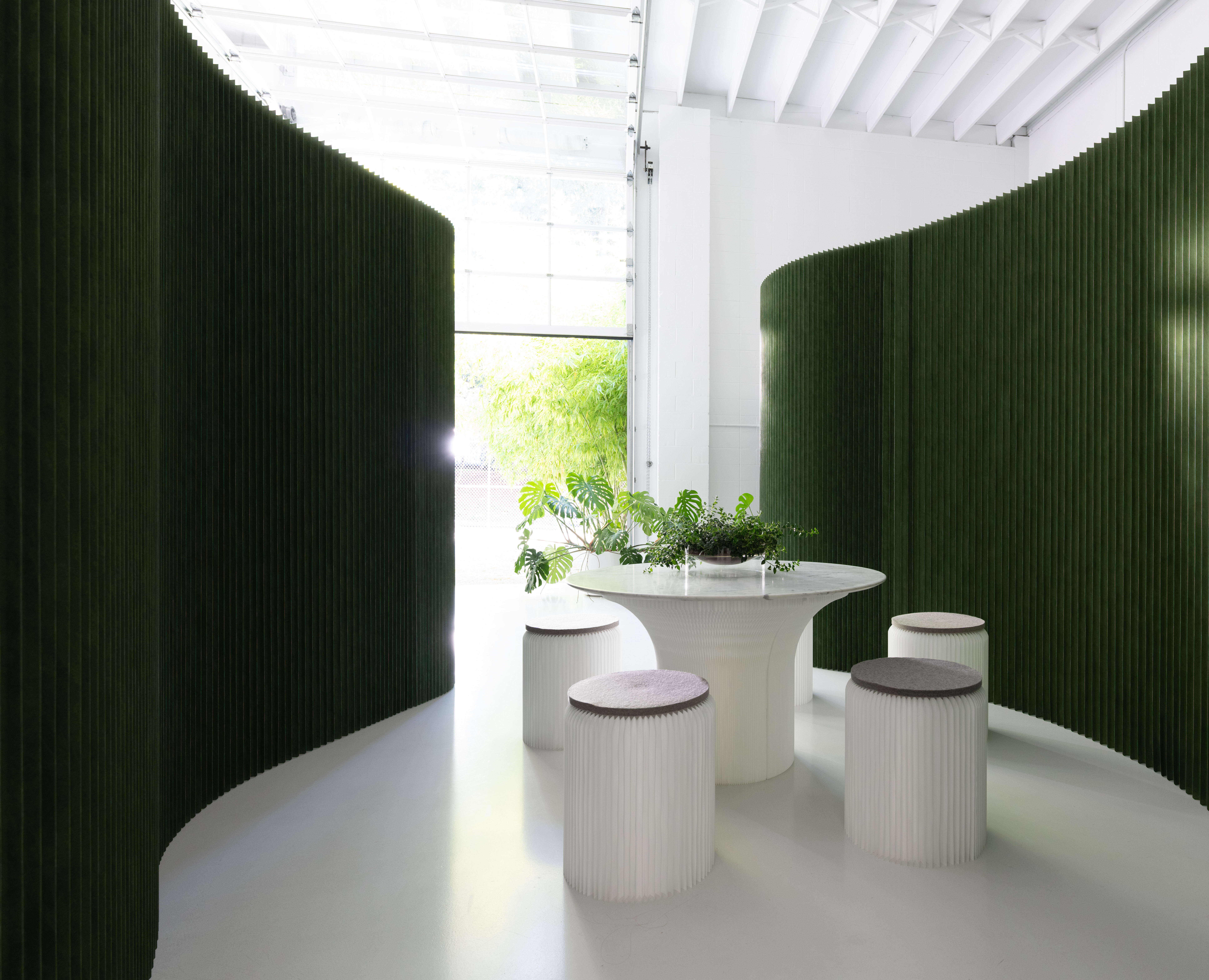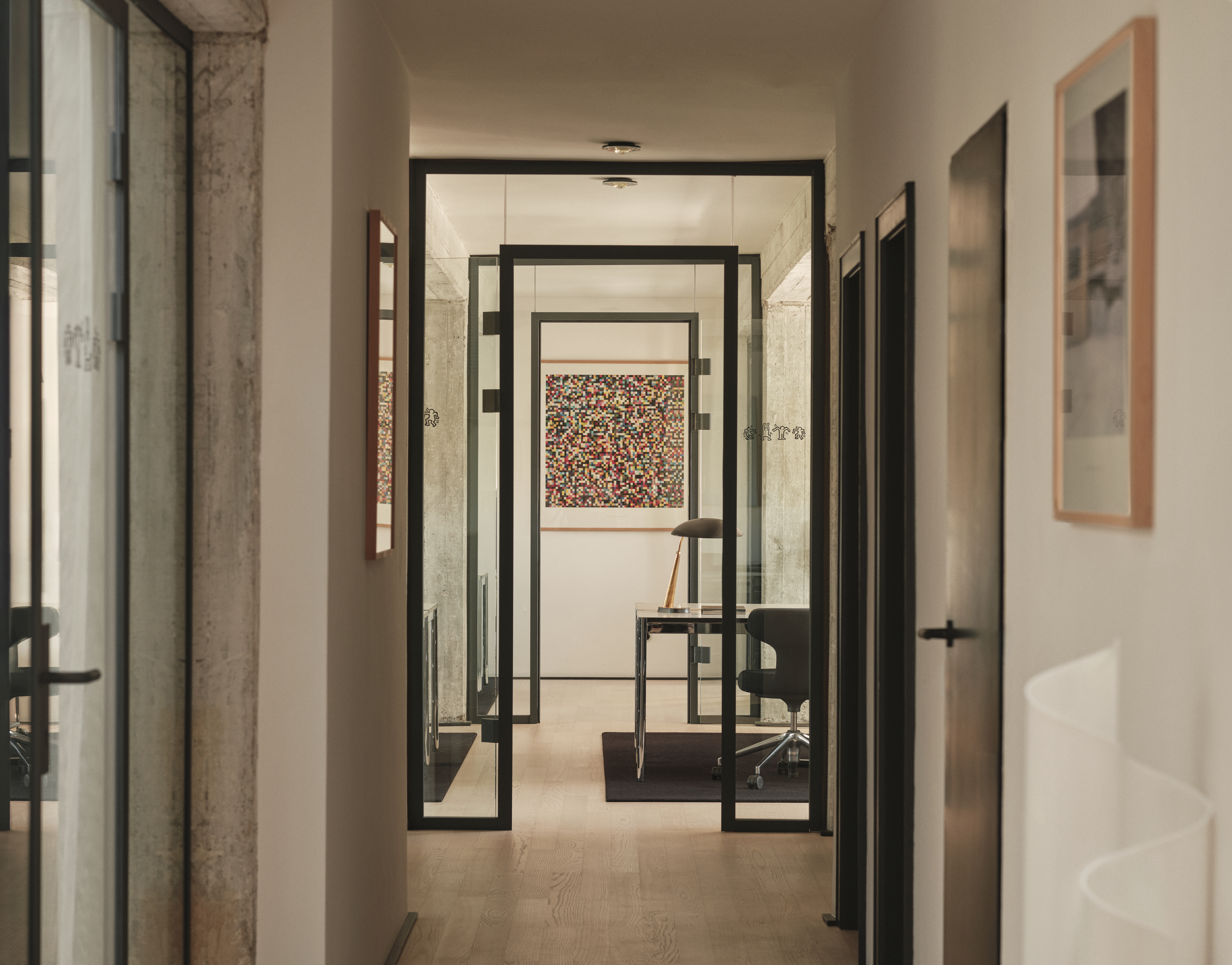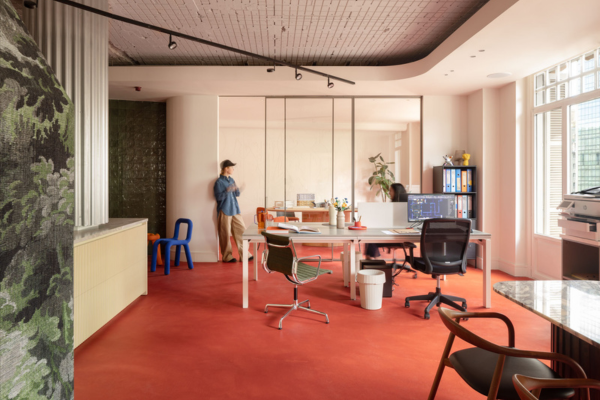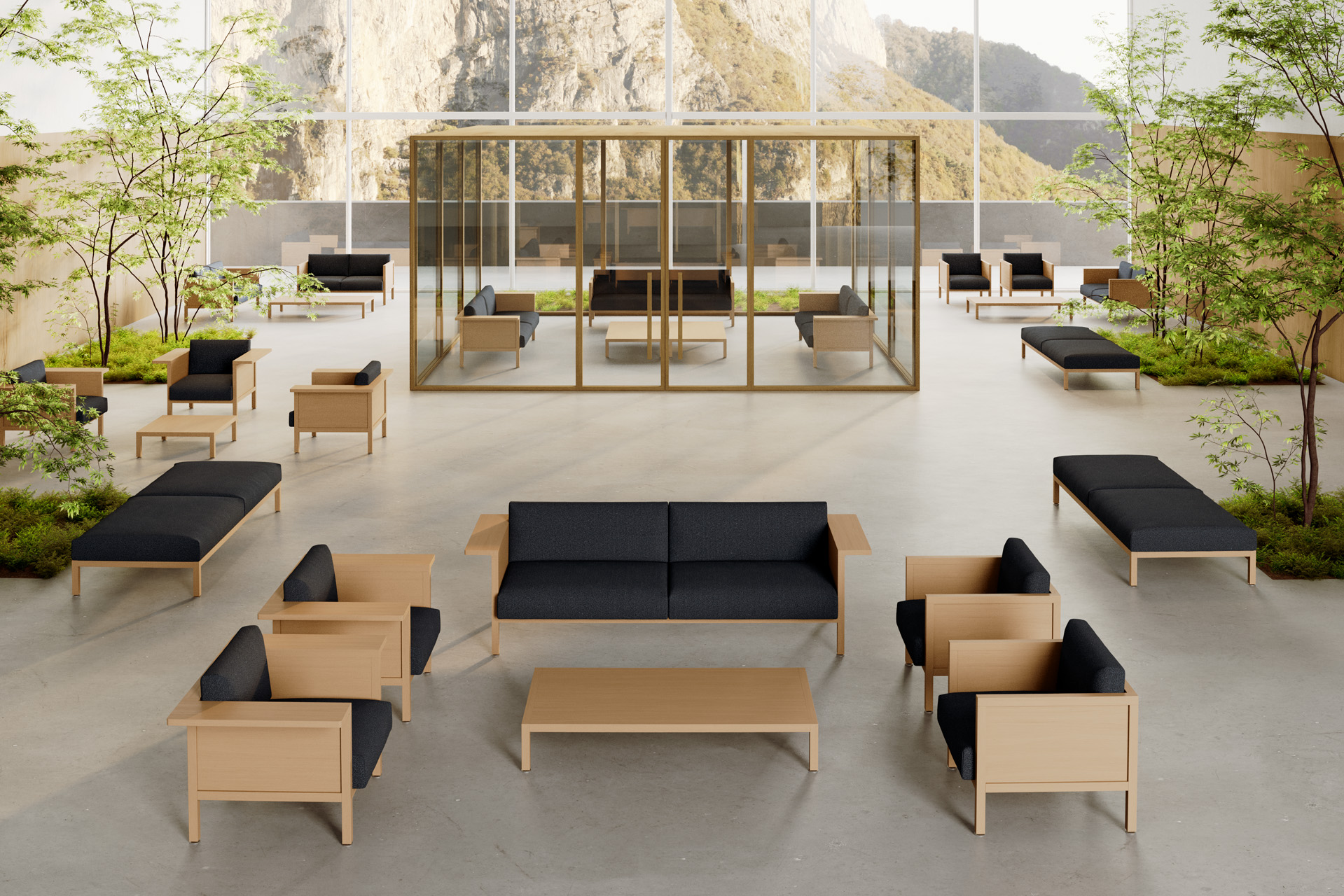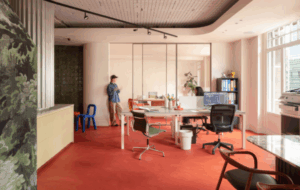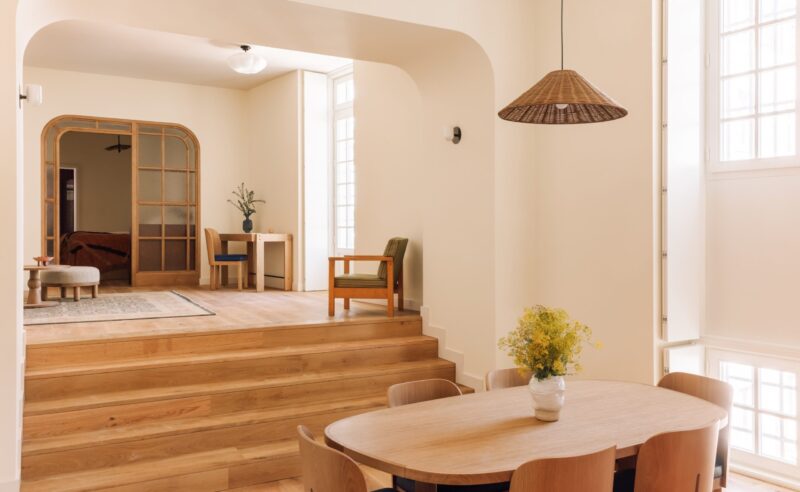
Lisbon’s buzzing hospitality scene welcomes Locke de Santa Joana, an aparthotel that masterfully blends the old with the new
These days most refits of historical properties will seek to be respectful of its bones, but not all projects are blessed with the amount of original details to merit the opening of an onsite museum too. The elaborate blue tiles in the lobby of Locke de Santa Joana in Lisbon are part of the beautiful bounty yielded by the work done on this former 17th-century convent, just off the prim, leafy Avenida da Liberdade. Tens of thousands of artefacts were discovered during the five-year renovation of the derelict building, which will keep the display cases in the exhibition well stocked.
Still, this new outpost of the global aparthotel brand Locke isn’t just a place to wonder at – it has a pleasingly lived-in feel thanks to interiors by New York-based Post Company and designer Lázaro Rosa Violán, who looked after rooms and common areas respectively. Locke chooses to commission different designers for each of its properties to avoid a cookie-cutter effect; this hotel – the biggest in its 16-strong collection so far – is inevitably shaped by the central building’s former vocation, and is set around a verdant courtyard complete with a small but pretty swimming pool. Whether they are in the old convent or in the three new blocks surrounding it, the 370 light-filled, white- washed rooms have a serene and minimalist (though not necessarily monastic) air.
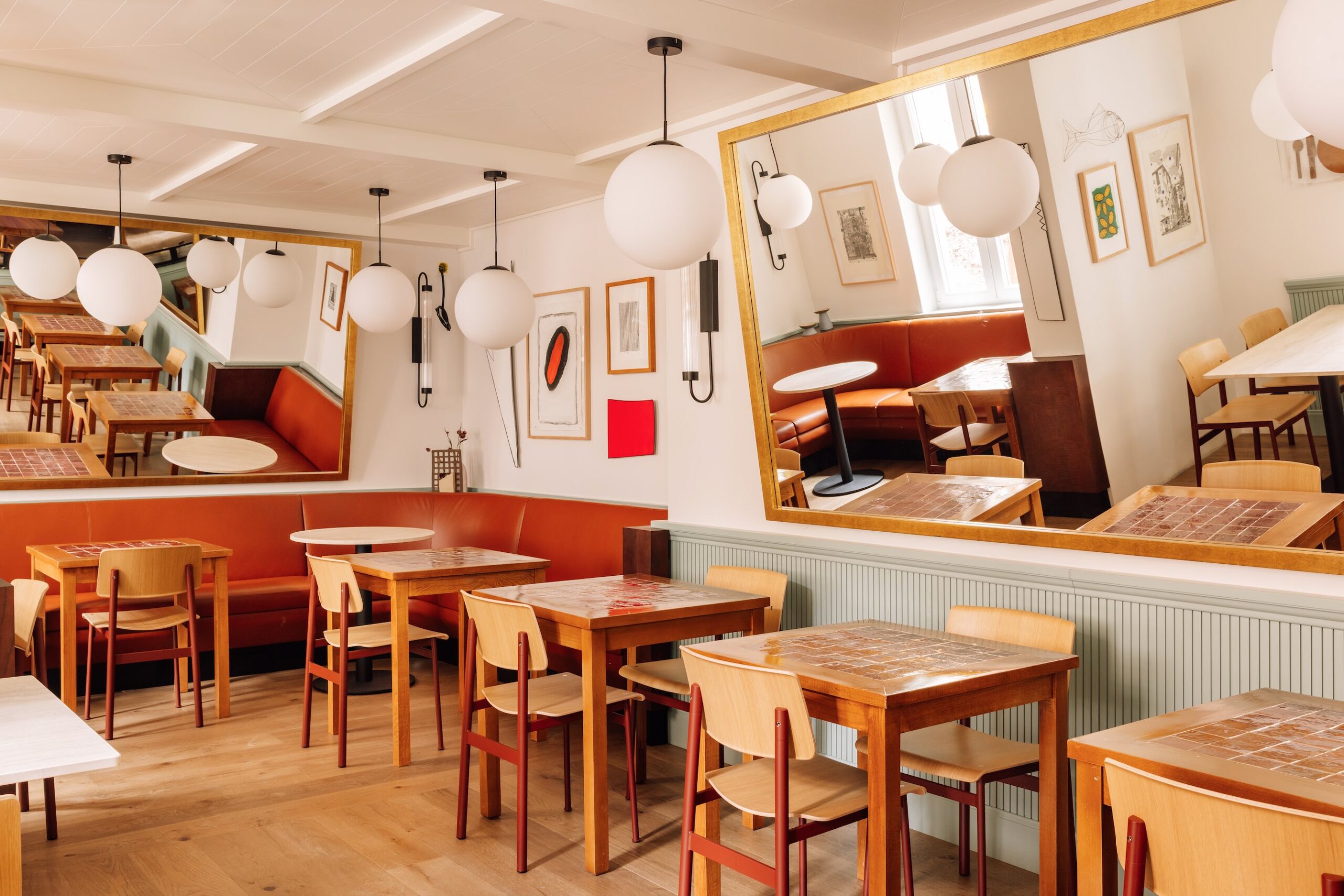
“The overall architecture held such a powerful scale, with grand archways, intricate trim details and thoughtful stone work. It truly allowed us to embrace the history and previous life of the space,” says Leigh Salem, a partner at Post Company. “Wherever feasible, we refined and highlighted historical elements, while introducing subtle architectural details that nod to the past and unite the old with the new. Simple mouldings and panelled millwork give dimension and elegance to the rooms, while the soft warm hue of the walls unifies all the details.”
The subtle palette of beiges, greys and forest greens, and blonde oak floors by UK-based manufacturer Atkinson & Kirby, are accented by rich textiles, ceramic pieces by Grau Cerâmica and period details including marble columns framing the beds in some of the spaces. Most materials, from fabrics to stone, were sourced within Portugal to underline a sense of place and celebrate the country’s long-standing craft traditions.
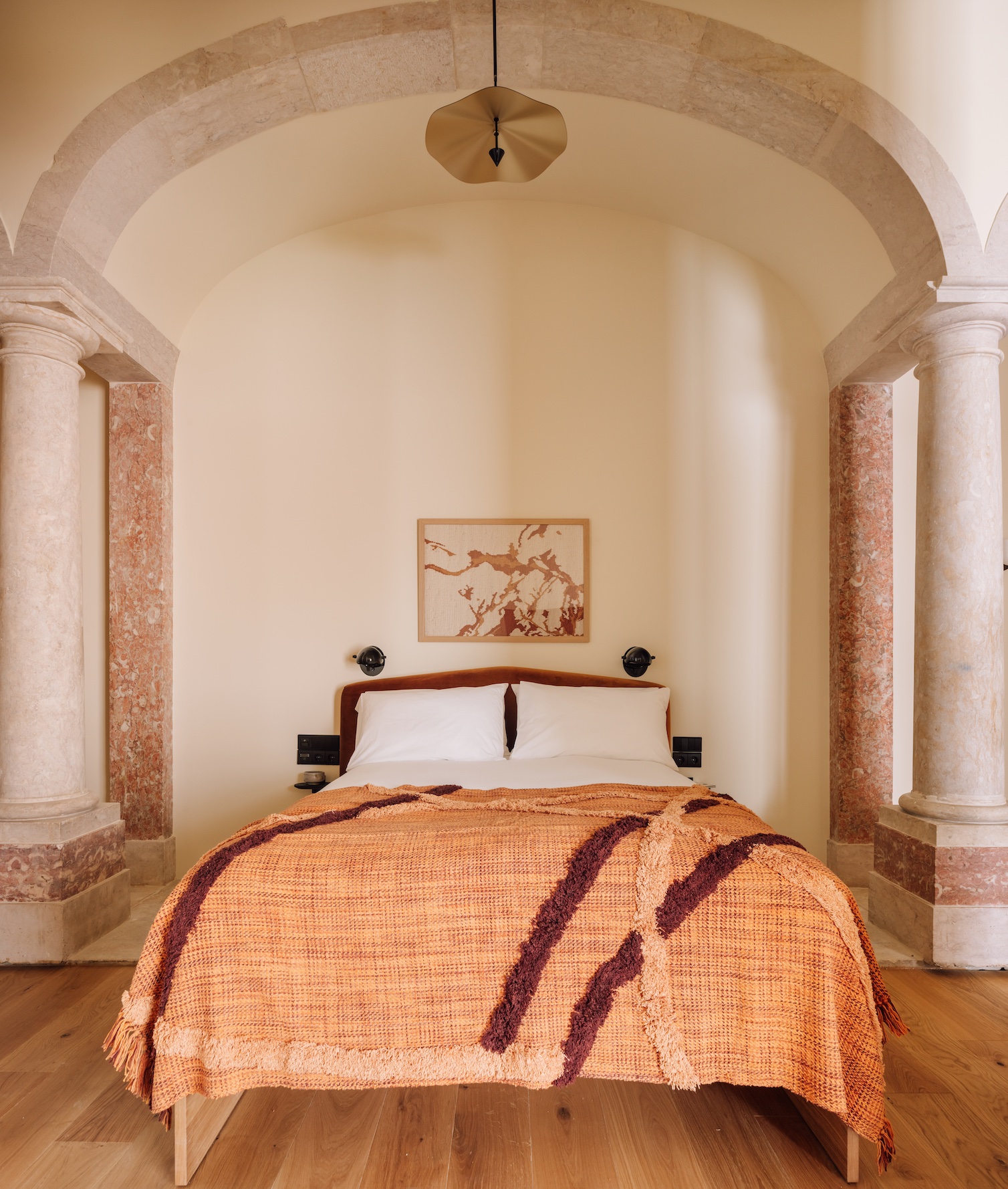
Given how many people from all over Europe have been drawn to Portugal to work remotely over the past few years, lured by the country’s relaxed lifestyle and relatively low cost of living, it makes sense that Locke should be pitching itself to suit longer stays. Many of the generously sized rooms are set up with a colour- popping kitchen and a dining area, with enough space to spread out a yoga mat, and textural sofas and armchairs lending a particularly homely feel. Crucially, there is a dedicated co-working space – which also prevents the lobby from being taken over by those working on laptops – as well as meeting rooms and event spaces.
An array of restaurants – from a casual Mediterranean-inspired spot to a more classic, fish-leaning brasserie, a daytime café serving pastries, a cocktail bar inside the convent’s library and a listening bar stocked with Lisbon’s largest whisky collection – are there to entice locals too. Though Lázaro Rosa Violán has deployed an eclectic approach to the public areas that range from moodier, low-lit and velvet-accented spaces to airier, plush ones, with plenty of pieces from local and international artists scattered throughout, there is still a concern with paying homage to the building’s past identity.
Architectural details, from marble flooring to azulejo tiles, have been highlighted and preserved and there are endearing little touches, such as the decision to frame and display the cutlery originally used at the convent at Santa Marta restaurant. The result is cheerful, colourful and contemporary, but respectful of the site’s spirit too.
Images by Francisco Nogueira
Enjoyed this article? Subscribe to our weekly newsletter here

